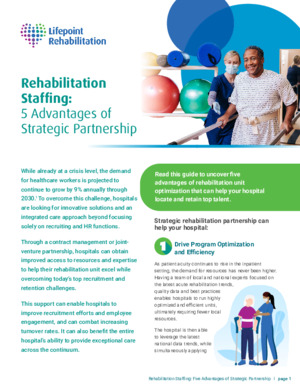The smart Trick of Narconon Africa That Nobody is Talking About
Table of ContentsEverything about Narconon AfricaThe Ultimate Guide To Narconon AfricaThe Of Narconon AfricaSome Known Questions About Narconon Africa.The Facts About Narconon Africa RevealedEverything about Narconon AfricaOur Narconon Africa Diaries
In a collection of papers with Manudeep Bhuller and Katrine V. Lken, we overcome these information difficulties and the nonrandomness of imprisonment, supplying brand-new understandings right into exactly how incarceration impacts regression, employment, children, and criminal networks - Effective long-term drug rehab results. Figure 1 Our work studies the impacts of imprisonment in Norway, a setup with 2 crucial benefitsWe can additionally connect this info to various other relative, including kids and brother or sisters. Moreover, we know on co-offending that allows us to draw up criminal networks for observed criminal activities. Second, we can take advantage of the arbitrary assignment of criminal cases to courts who differ in their tendencies to send offenders to prison.
However some judges send offenders to prison at a high price, while others are extra tolerant. We determine a court's stringency as the typical imprisonment rate for all various other situations a judge manages, after regulating for court and year fixed results, which is the degree of arbitrary project. This quasi-random assignment of judge stringency can be made use of as an instrument for incarceration, as it highly anticipates the court's choice in the current instance, yet is uncorrelated with various other instance attributes both by design and empirically.
The Buzz on Narconon Africa
Attributes of detainees, including demographics and criminal offense categories, are generally comparable in Norway and other countries, including the United States, with the exceptions that the US murder rate is a lot higher, and race plays a bigger function there also. What sticks out as different, specifically contrasted with the USA, is the jail system.
Number 2In Norway, the ordinary time invested in jail is a little over 6 months, which resembles most various other Western European countries. This contrasts with ordinary US prison time of almost three years, which remains in large component the reason the United States is an outlier in its imprisonment rate compared to the rest of the globe [Number 1]
Narconon Africa for Beginners
This offers much even more separation in between minor and hard crooks than exists in the United States. There is no congestion in Norwegian prisons and much better individual safety, with each detainee being designated to their own cell and a higher inmate-to-staff proportion than in the United States (https://calendly.com/narconon0346-proton/30min). Prisons in Norway additionally supply well-funded education and learning, drug treatment, psychological wellness, and job training programs
Our research on the effects of incarceration on the culprit, utilizing the arbitrary project of judges as an instrument, returns three essential findings. Jail time inhibits better criminal habits. We find that imprisonment lowers the probability that a person will certainly reoffend within 5 years by 27 percent factors and decreases the corresponding number of criminal fees per individual by 10 fees.
Narconon Africa - An Overview
We discover large decreases in reoffending probabilities and cumulative billed criminal offenses even after accuseds are launched from prison. Our 2nd result is that predisposition due to option on unobservable private characteristics, if neglected, causes the erroneous conclusion that time invested behind bars is criminogenic. If we simply contrast criminal accuseds sentenced versus those not imprisoned, we find favorable associations between incarceration and succeeding crime.
This stands in comparison to our evaluation based upon the random job pop over to these guys of courts, which finds an opposite-signed result. Third, the decrease in crime is driven by people who were not working prior to imprisonment. Among these people, jail time raises involvement in programs directed at improving employability and lowering regression, and this eventually raises work and earnings while inhibiting criminal behavior.

Imprisonment causes a 34 percentage factor boost in engagement in task training programs for the previously nonemployed, and within five years their employment price boosts by 40 portion factors. At the exact same time, the chance of reoffending within five years is cut by 46 percentage points, and there is a decline of 22 in the typical variety of criminal costs.
Little Known Questions About Narconon Africa.

A possible explanation for the difference is that Norway's jail system differs noticeably, both in regards to prison-term size and prison conditions, from the US jail system. While understanding the effects of incarceration on the offender is an essential primary step, catching spillover impacts is likewise important for evaluating criminal justice plan and designing efficient jail systems.
An Unbiased View of Narconon Africa

Average the very least squares approximates disclose that youngsters of incarcerated fathers are 1 percent factor most likely to be charged with a crime, family member to a mean of 13 percent, and reveal no impact on institution qualities. Utilizing our judge stringency tool, we find no analytical evidence that a father's incarceration affects a youngster's own criminal offense or school qualities, yet we are not able to eliminate modest-sized effects.
The Facts About Narconon Africa Uncovered
We define criminal teams based on network links to previous criminal cases. Our analysis returns three major findings. First, when a criminal network member is put behind bars, their peers' probability of being billed with a future criminal activity reduces by 51 portion factors over the following four years. Having an older sibling put behind bars minimizes the chance his younger sibling will be billed with a criminal offense by 32 percentage factors over the next 4 years.